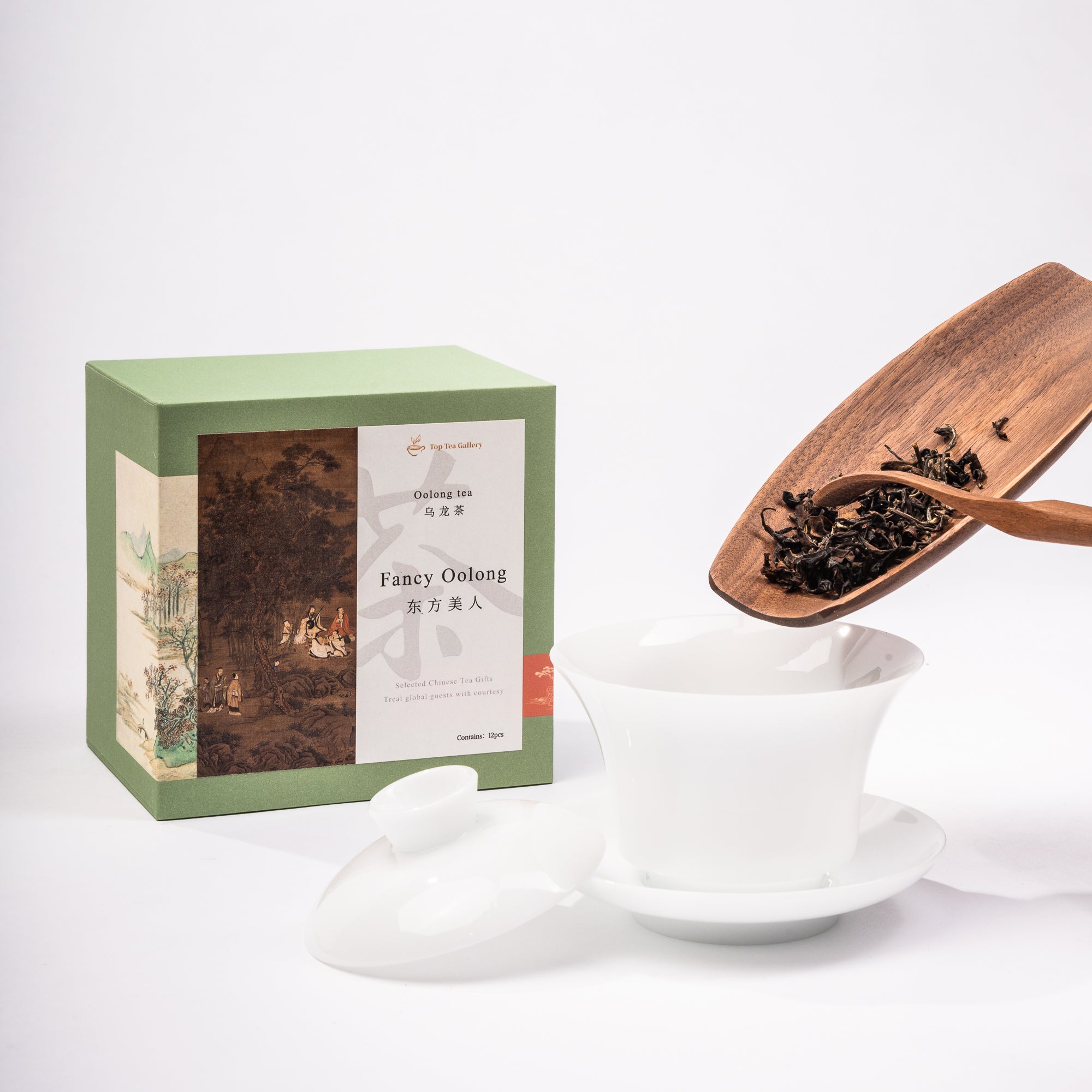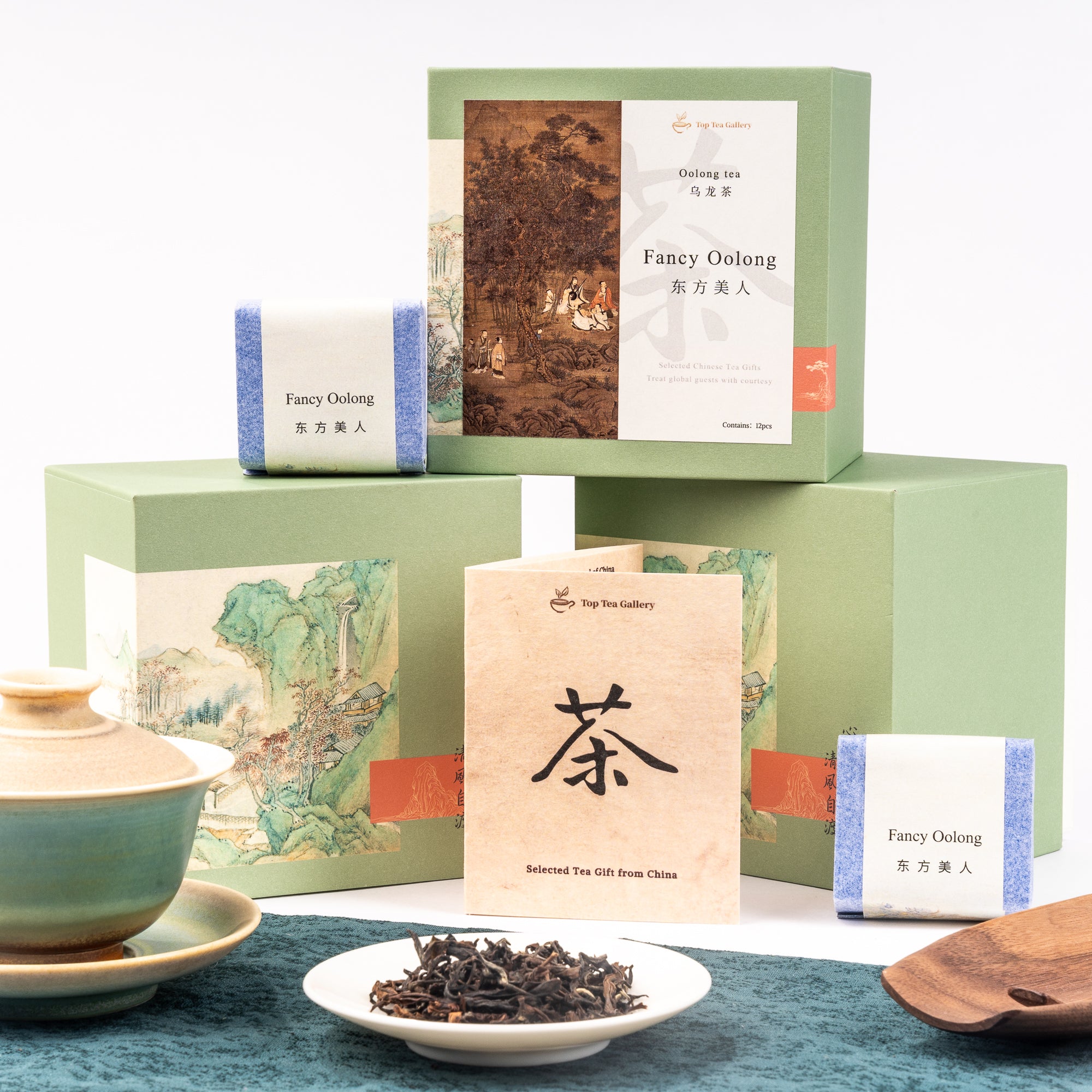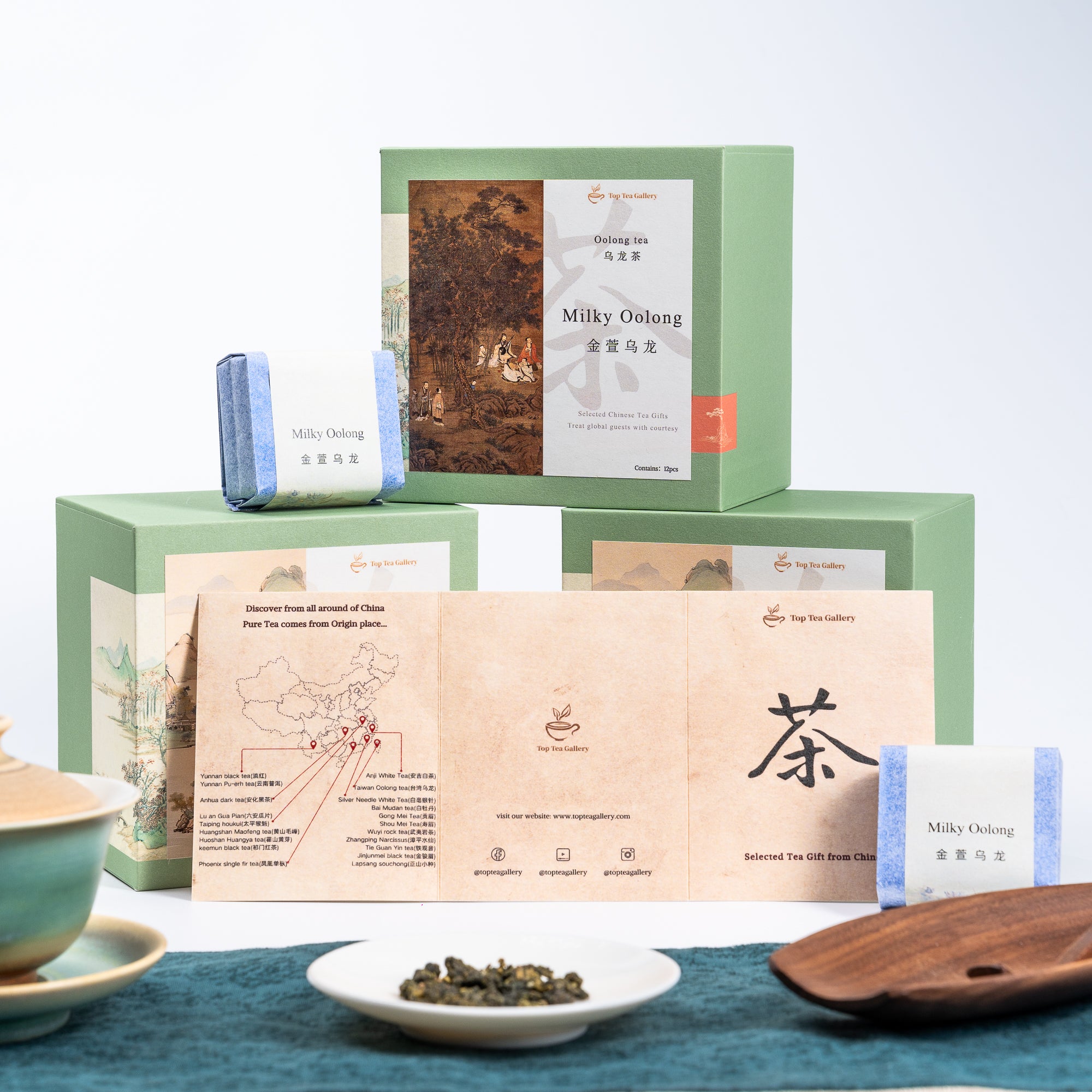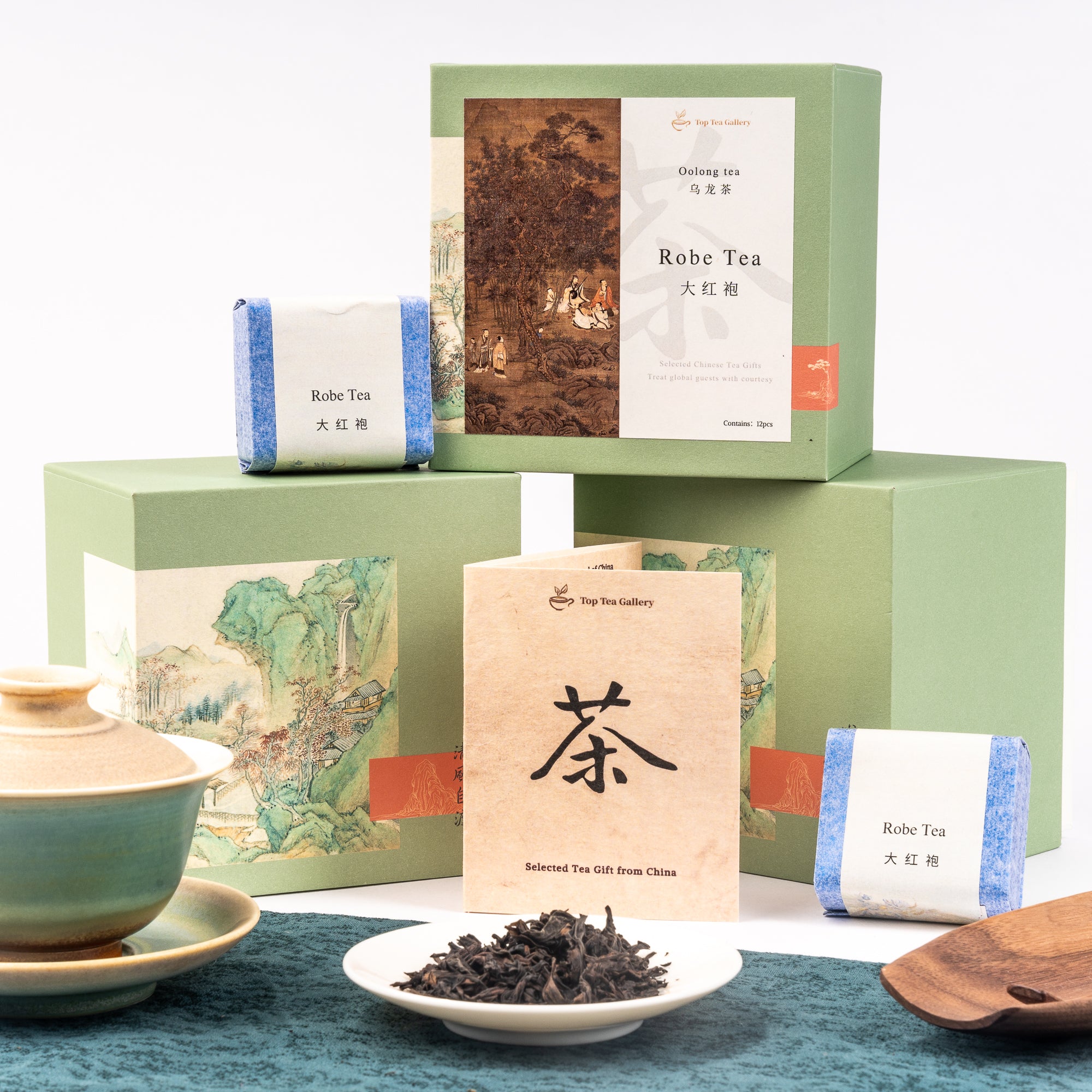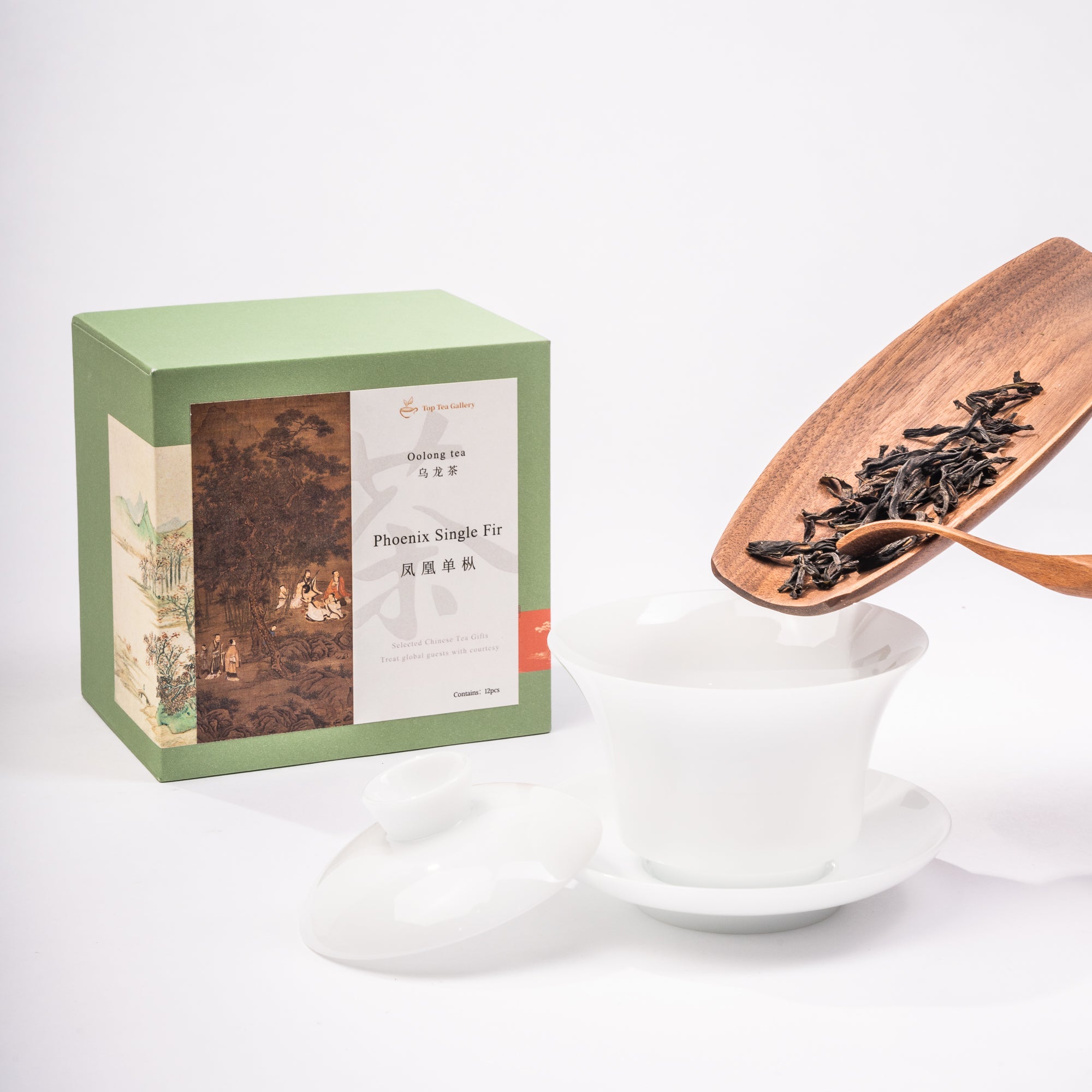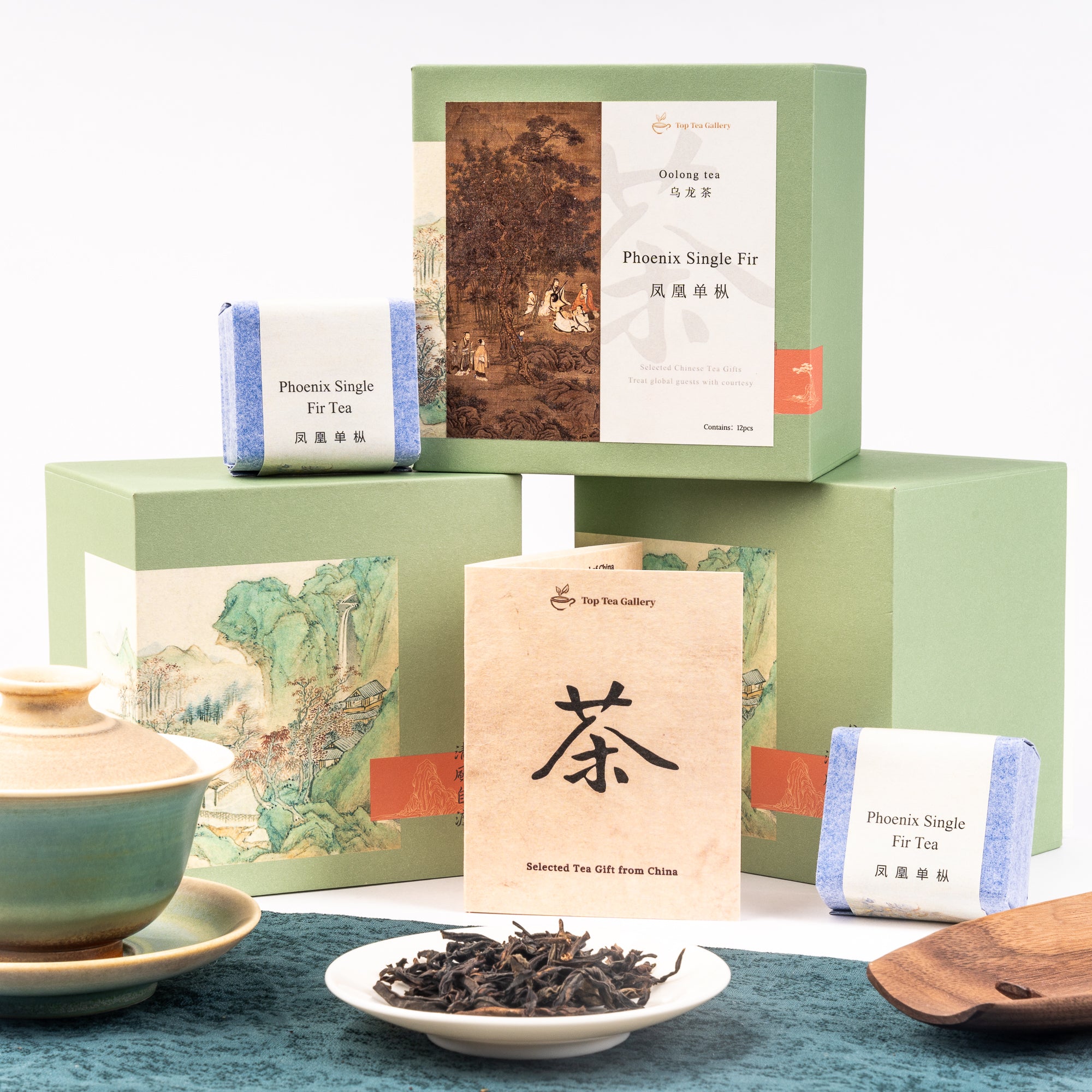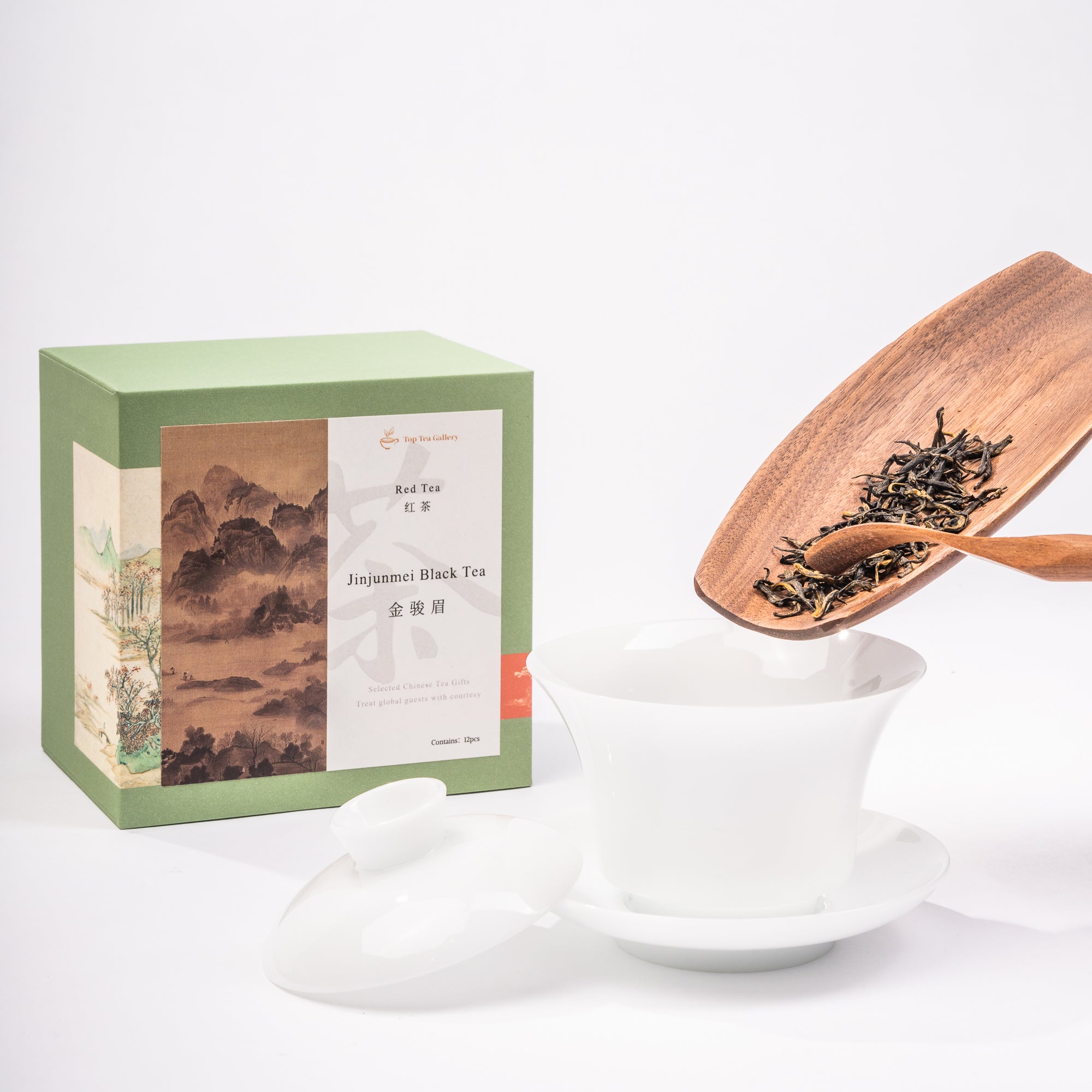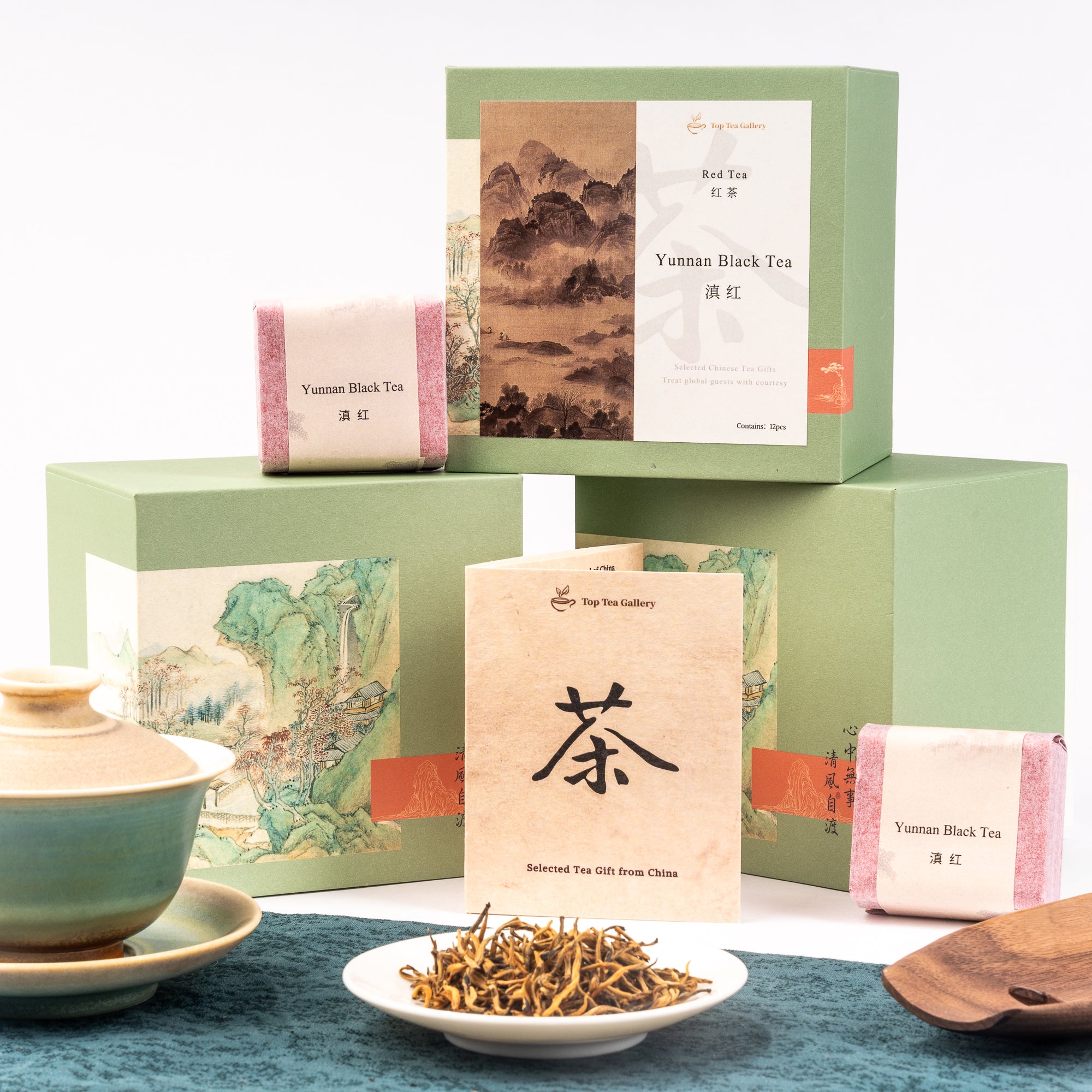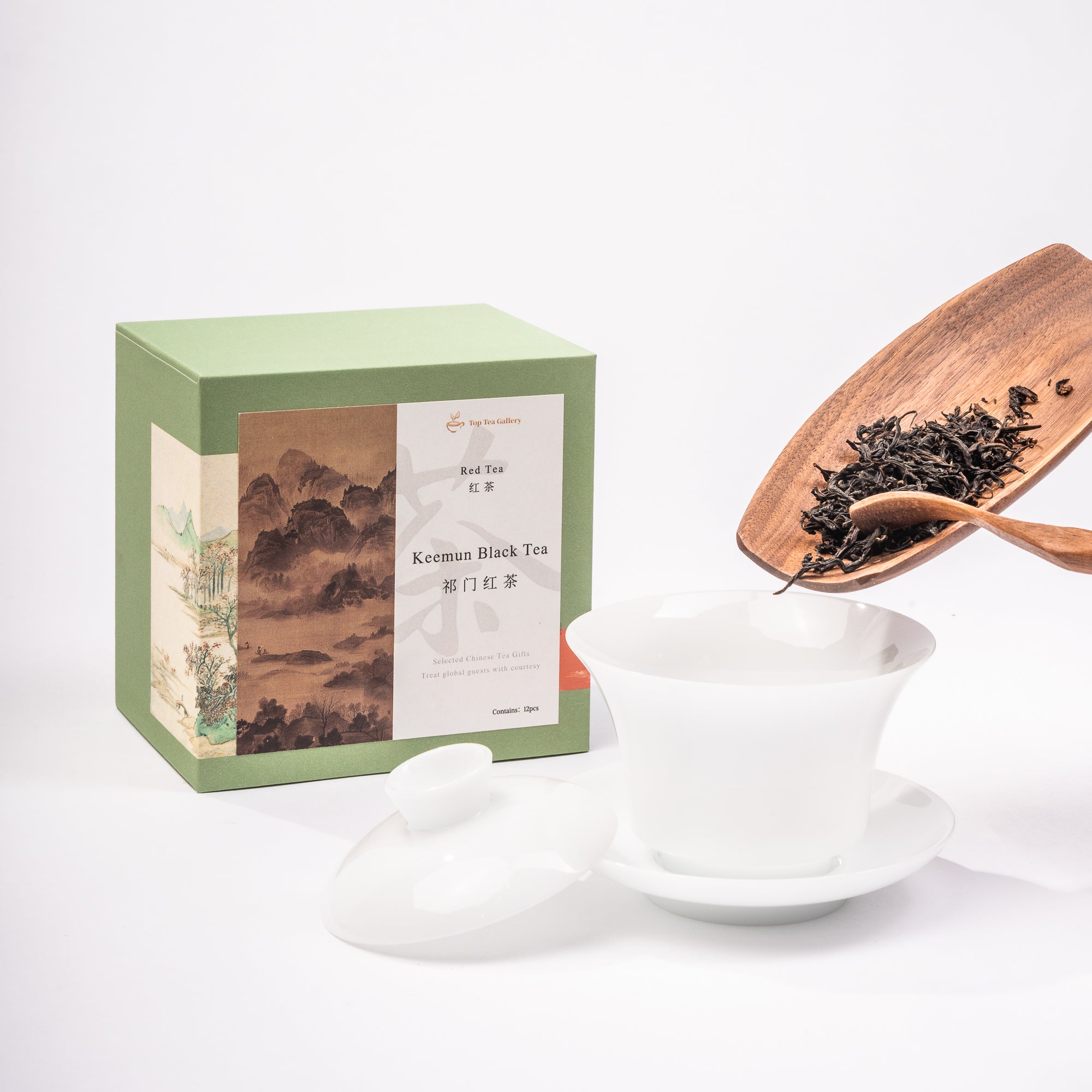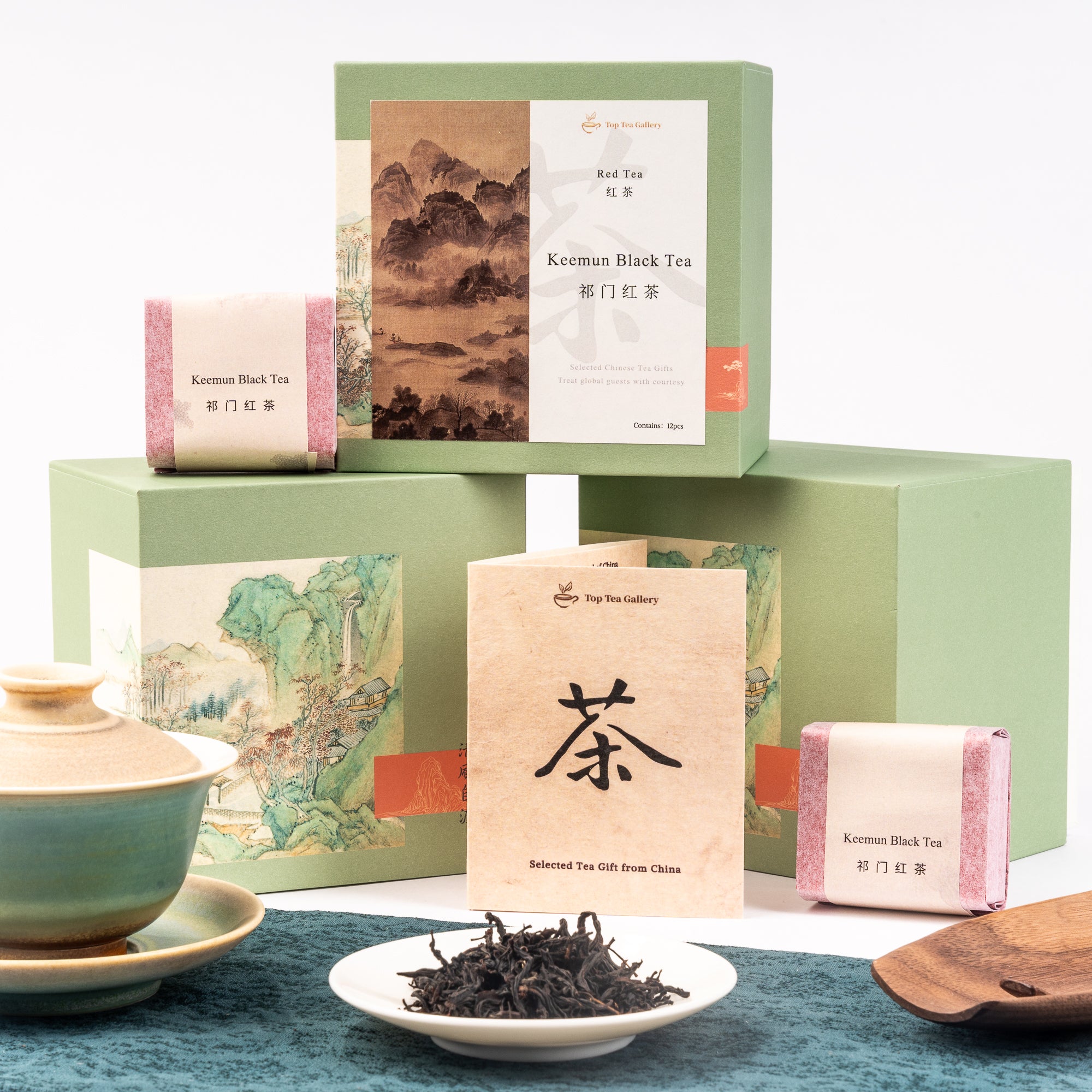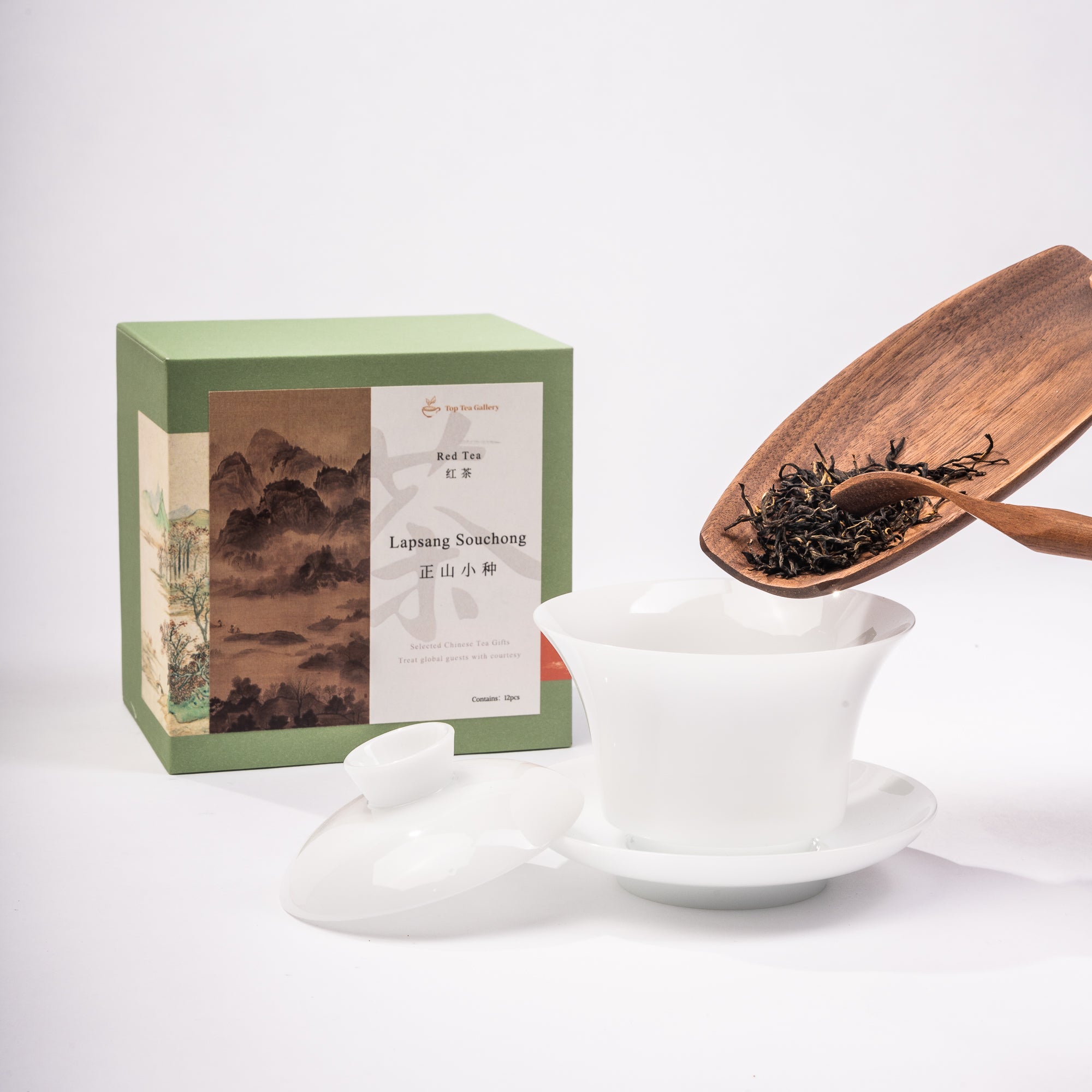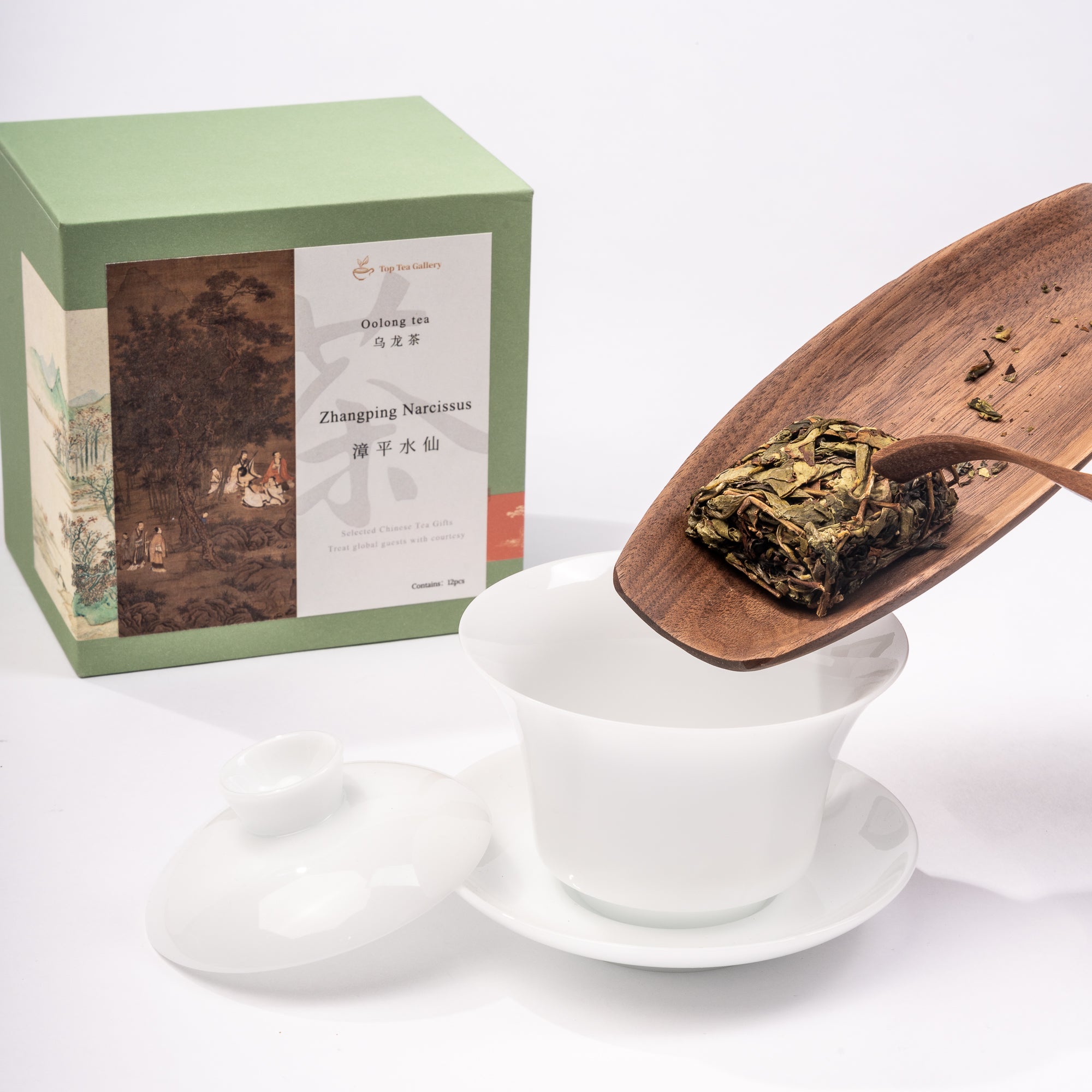
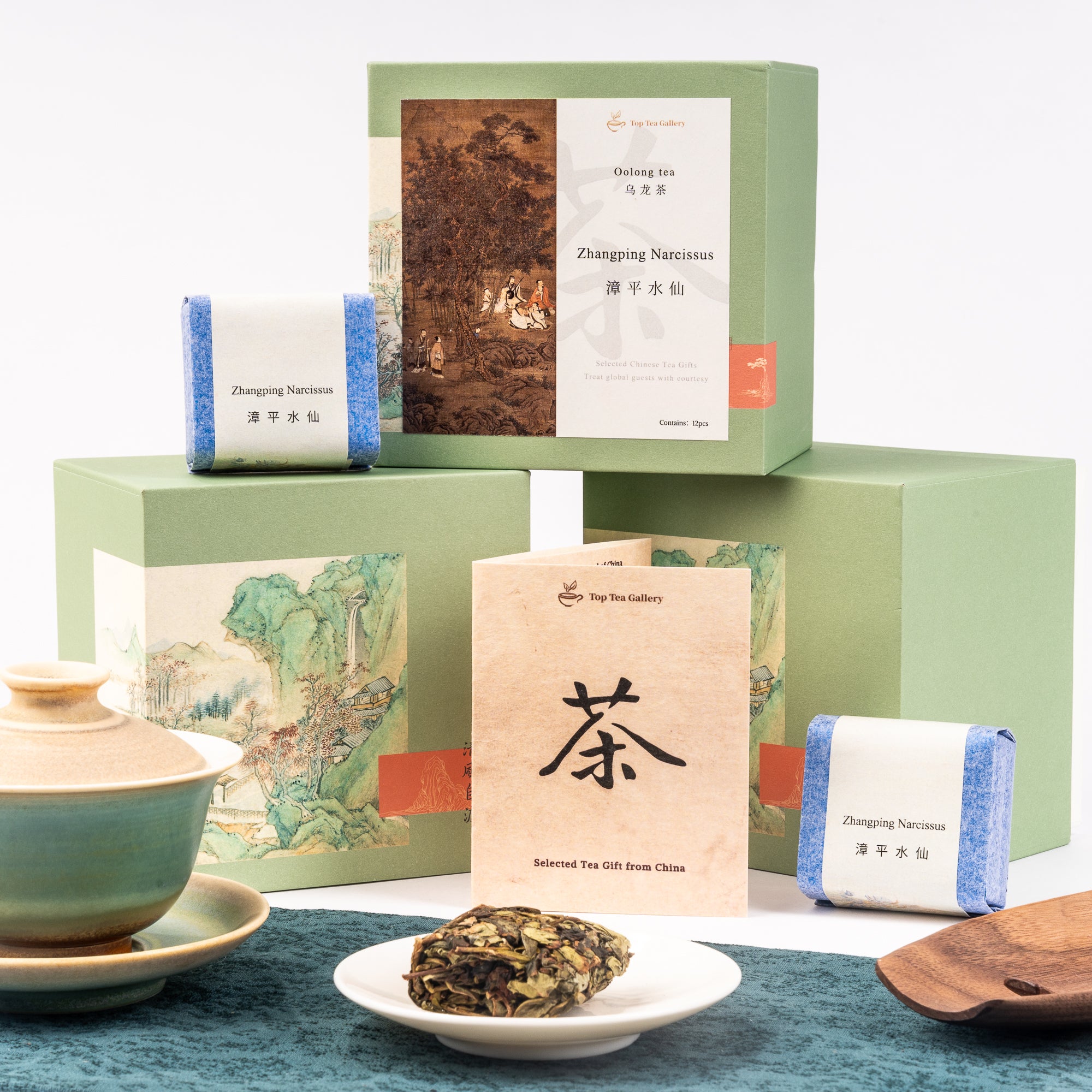



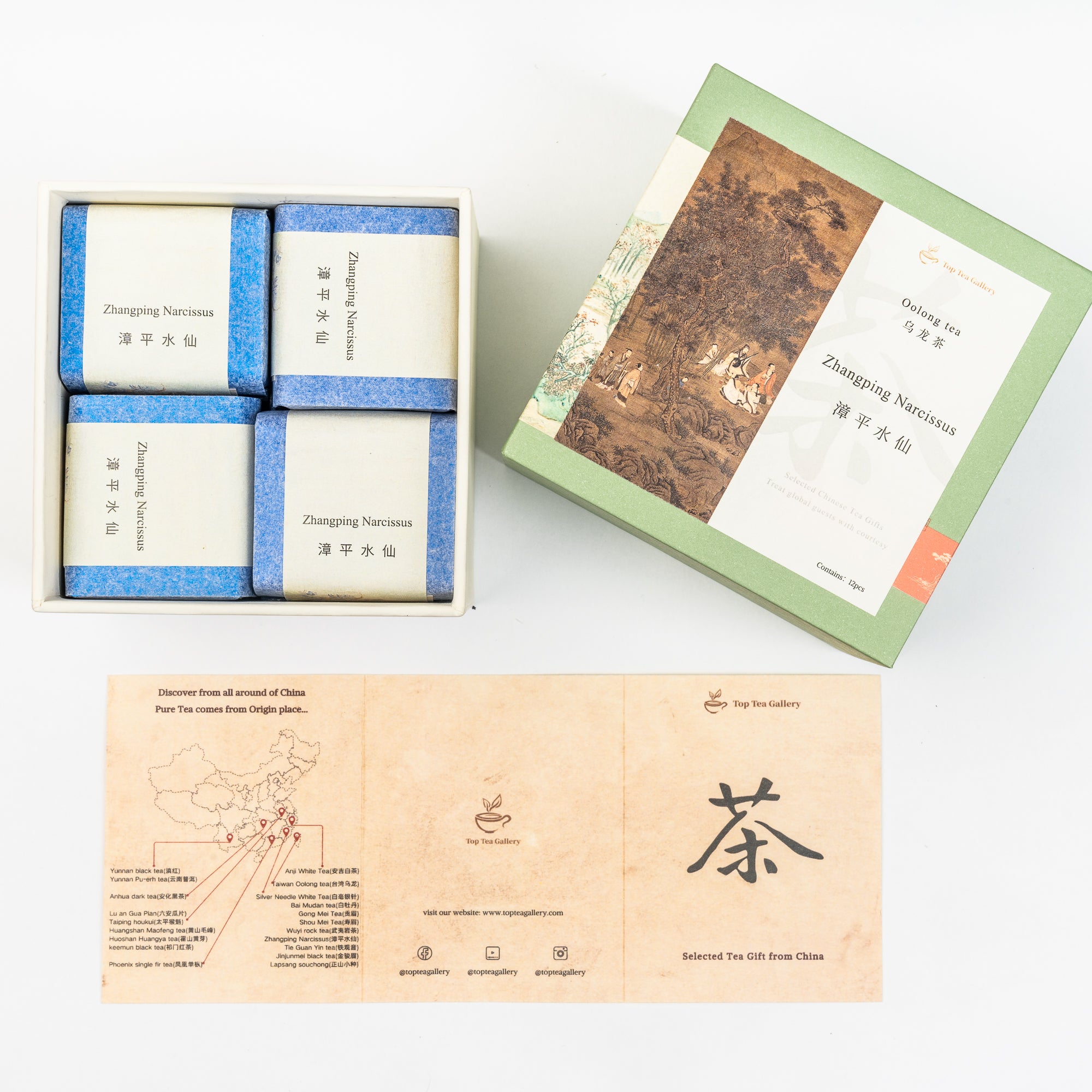

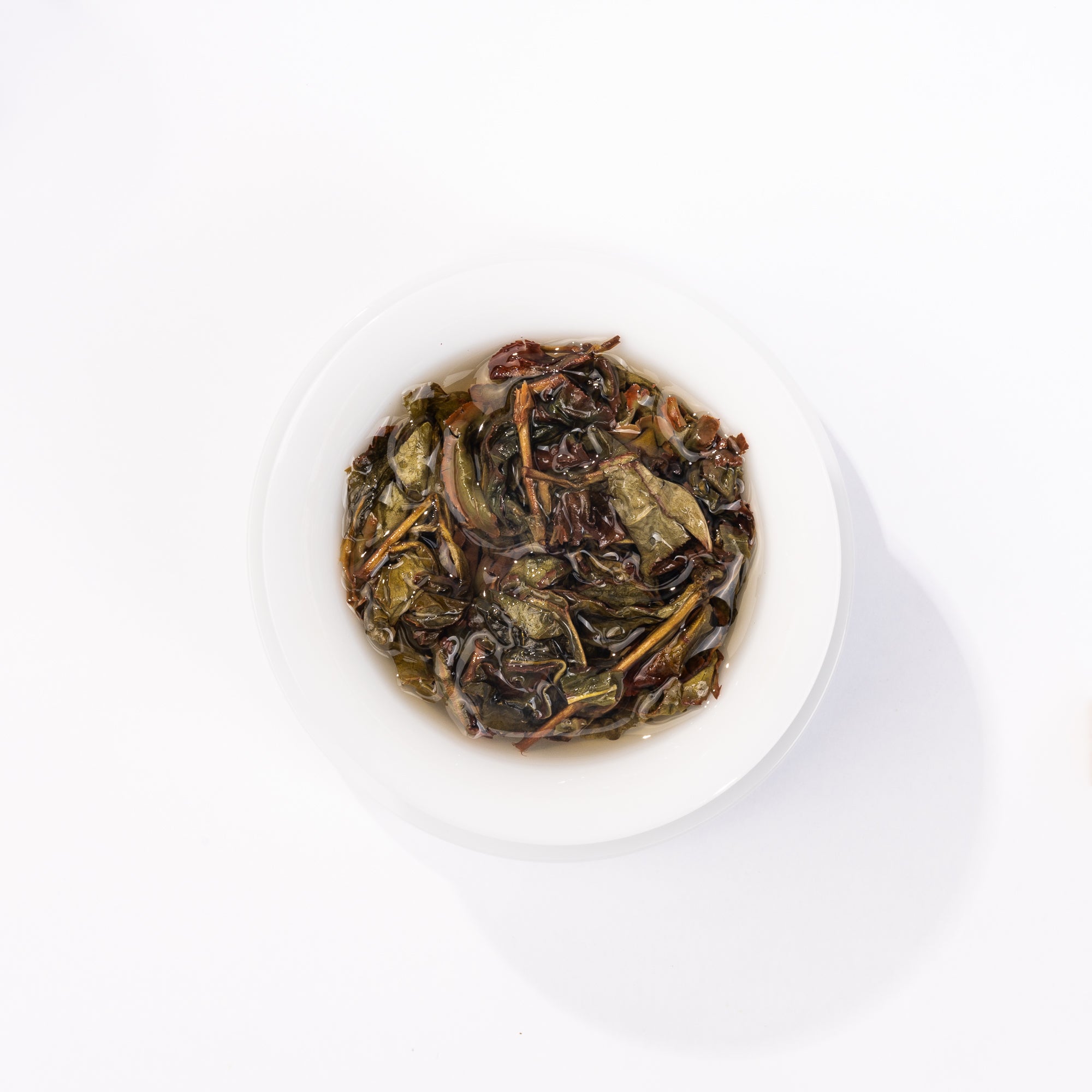
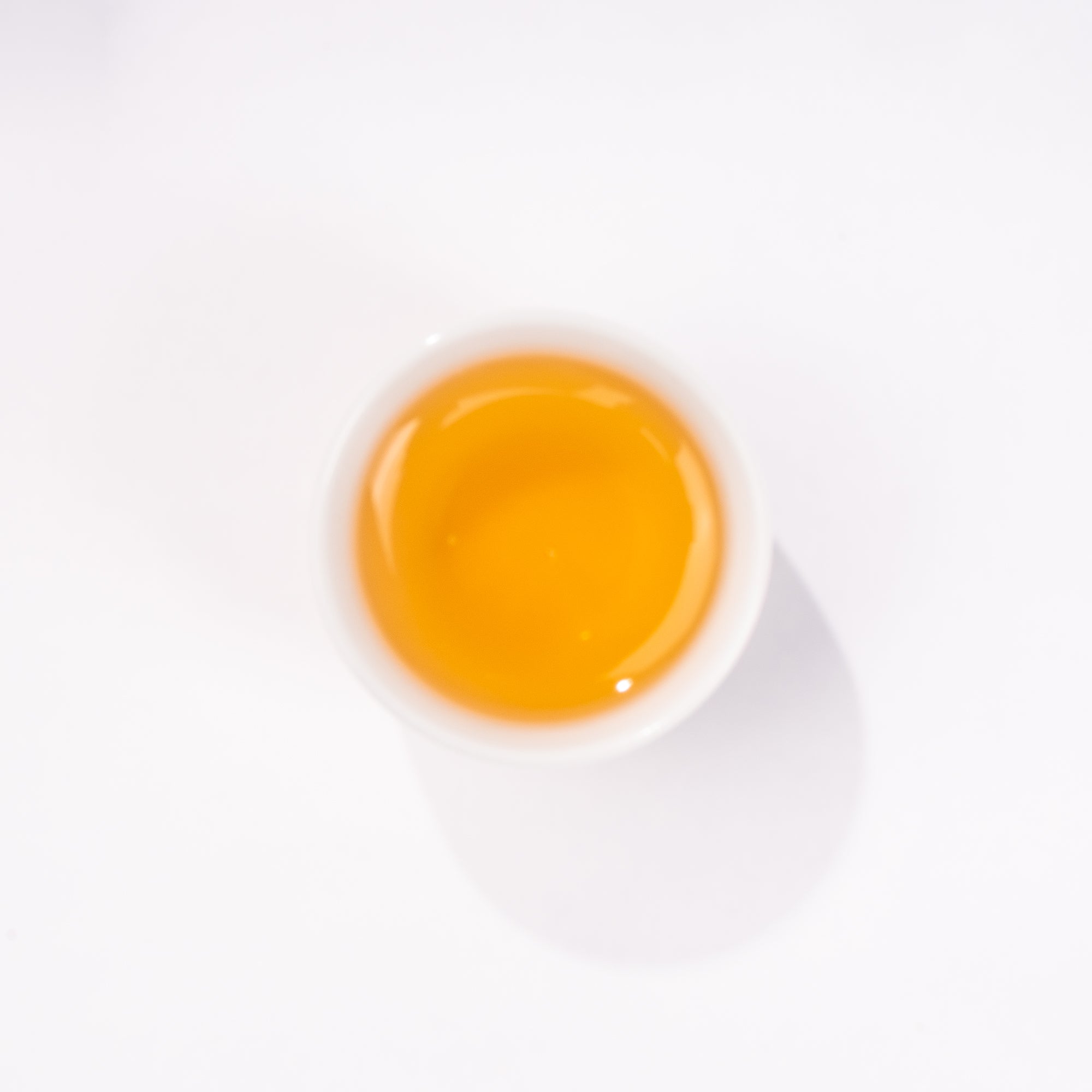
Old Fir Narcissus (老枞水仙)
50 grams per box
This tea box contains 12pcs with 4-6grams per pc, total 50 grams.
Old Fir Narcissus is the flagship variety of Wuyi Rock Tea, often celebrated as "None is smoother than Fir Narcissus, no aroma richer than Cassia, and no dominance compares to Iron Luohan." Fir Narcissus tea trees aged between 3 to 5 years are referred to as young; typically, they are not harvested during this period. Tea trees aged between 5 to 49 years, having undergone pruning, are termed "dwarf bushes," while those untouched are called "tall bushes." Trees aged 50 years and above, never pruned, are dubbed "old bushes," and those exceeding a century without pruning are revered as "centennial old bushes." The longer the age of the Fir Narcissus tree, the thicker the soup's sensation.
When sipping high-altitude Fir Narcissus tea, the velvety smoothness of the soup is akin to indulging in a glass of well-aged sorghum liquor, leaving one entirely satisfied. With deep-rooted high-altitude Fir Narcissus trees, the nutrients are richer, resulting in plumper tea leaves that accumulate a myriad of substances such as proteins, aromatic compounds, amino acids, sugars, pectins, and more within their leaf cells. Sipping such Fir Narcissus tea is like tasting crystal-clear jelly or the comforting warmth of rice porridge.
The mineral content plays a vital role in determining the depth of flavor. With their long age and deep roots, old Fir Narcissus trees can penetrate deeper layers of decomposed rock to absorb minerals. Furthermore, old Fir Narcissus trees thrive in misty and shady environments. Regions like Wu San Di and Cheng Dun are characterized by heavy fog and high humidity, with tea trees adorned in moss, akin to wearing thick cotton clothes. It is said that tea produced from such old Fir Narcissus trees exudes a distinct fragrance of mature brown leaves and the scent of crushed moss, a unique aura forged by years of natural elements.
But what exactly is the "Fir Narcissus flavor," and what does it encompass?
-
Mossy Flavor: Due to the lengthy age of old Fir Narcissus tea trees, moss often grows on their trunks. Some tea farmers deliberately accentuate this mossy flavor during tea processing, resulting in a characteristic taste present in most old Fir Narcissus teas.
-
Rice Dumpling Fragrance: Similar to the aroma emitted by the outer layer of rice dumplings during the Dragon Boat Festival. This fragrance is attributed to the mountain essence infused into brewed old Fir Narcissus tea.
-
Woody Flavor: Being the sole arbor type among Wuyi Rock tea varieties, the most inherent taste of Fir Narcissus is its woody essence. Many Fir Narcissus teas will exhibit this flavor from the first few brews and persist until the end.
-
Toasted Rice Flavor: Similar to the aroma of toasted millet.
The initial few brews of old Fir Narcissus tea may seem subtle, but they possess a rich and enduring flavor. When old Fir Narcissus tea can convey a sense of simplicity to tea drinkers through aroma and taste, the experience of drinking such tea reaches a pinnacle.
How to brew this tea?
Here are some tips to help you brew the perfect cup:
-
Water Quality: Start with fresh, filtered water. The quality of water can greatly impact the taste of your tea, so it's best to use water that is free from impurities.
-
Water Temperature: Fir Narcissus tea is delicate, so it's important to use the right water temperature. For this tea, water that has been heated to around 185°F (85°C) is ideal. Boiling water can scorch the leaves and result in a bitter taste, so let the water cool for a few minutes after boiling before pouring it over the tea leaves.
-
Tea Leaves: Use about 1 teaspoon of Fir Narcissus tea leaves per 8 ounces of water. You can adjust this amount based on your personal preference for a stronger or lighter brew.
-
Brewing Time: Let the tea leaves steep in the hot water for about 3-4 minutes. Steeping the leaves for too long can make the tea taste bitter, so be sure to set a timer and remove the leaves promptly once the brewing time is up.
-
Teaware: Opt for a teapot or brewing vessel made of glass, porcelain, or ceramic to allow you to appreciate the color of the tea liquor. Avoid using metal teapots, as they can impart unwanted flavors to the tea.
-
Multiple Infusions: Fir Narcissus tea leaves can be steeped multiple times, each time revealing different nuances of flavor. After the initial steeping, you can reuse the leaves for 2-3 more infusions. Simply increase the steeping time slightly with each subsequent brew.
-
Savoring: Once the tea is ready, pour it into a cup and take a moment to appreciate its aroma. Fir Narcissus tea is known for its floral fragrance and delicate, sweet taste. Sip the tea slowly, allowing the flavors to linger on your palate.
By following these brewing tips, you can enjoy a delightful cup of Fir Narcissus tea that captures the essence of this exquisite variety. Experiment with different brewing parameters to find the perfect balance of flavor and aroma that suits your taste preferences. Don't forget to select a teapot and tea pet to spend the best tea time with you!
Choose options









High Quality small package Tea to create a light leisure tea life
Need help?
Frequently Asked Questions
Referencing our "Make the Perfect Cup of Tea" instructions, take 1 Tou Cha (remove the paper wrapping), place it into a pre-heated teapot or cup, add 16 oz boiling water, and steep 5 + minutes. Respectfully, drink plain.
Pu-Erh tea is most commonly formed into bricks or cakes and traditionally used as a form of currency.
Pu-Erh is a black tea and is therefore high in caffeine, compared to green or oolong tea.
You may also like
Community Favorites

